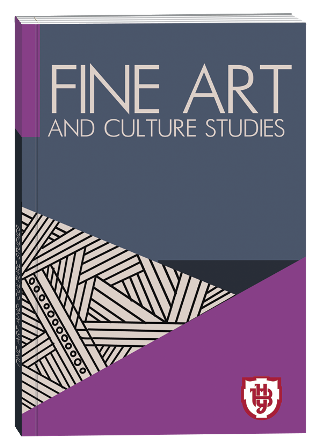CHINESE TROMBONE ART AS A SOCIO-CULTURAL PHENOMENON
DOI:
https://doi.org/10.32782/facs-2025-3-1-5Keywords:
trombone, Chinese trombone art, trombone performance, Chinese composers, works for trombone, trombone repertoire, trombonistAbstract
The aim of the article is a comprehensive study of Chinese trombone art, in terms of the East-West dichotomy.The methodological base is based on a comprehensive approach, in which theoretical-analytical, organological, musicological, comparative and inductive-deductive methods were given priority. Chinese trombone art should be considered as an original Chinese socio-cultural phenomenon, which has a number of unique features and historically formed characteristics.The following can be attributed to them: the relatively late introduction of the trombone into the field of orchestral instrumentsin the Chine, due to the fact that the instruments of the Western orchestra were accepted in the space of Chinese musicalculture at the end of the 19th – at the beginning of the 20th century with a certain reservation, they were spread in the regionthanks to the activities of missionaries, music lovers and animators of musical life in China, through the prism of interculturalcommunication; a combination of national performance traditions on brass instruments, in particular, trombone, and Western performance standards; the presence of the trombone in symphony, brass and military orchestras, in jazz bands and pop groups; the formation of the Chinese trombone performing and didactic repertoire, which is based on solo and ensemble works of Western composers, to a lesser extent of the Chinese composers; the presence of a significant number of trombone performers, many of whom first received studios in the Motherland, and then continued their studies in the West; wide opportunities for learning to play the trombone at all levels, from elementary to professional; free supply of trombonists with instruments, thanks to the presence of wind instrument manufacturing factories in the country; the presence of the trombonein the space of modern Chinese musical culture as an instrument with an original timbre sound and peculiar semantics,significant performance and aesthetic-artistic potential.
References
Дубка О. Соната для тромбона у творчості зарубіжних та українських композиторів ХХ – початку ХХІ століть : канд. дис. на здобуття наукового ступеня кандидата мистецтвознавства : 17.00.03 «Музичне мистецтво». Харків : ХНУМ імені І. П. Котляревського, 2020. 201 с. URL: https://repo.num.kharkiv.ua/handle/num/237 [дата звернення: 05.04.2025].
Катрич О. Виконавський стиль і та музичне стилетворення (до питання моделювання аналітичної оптики). Наукові збірки Львівської національної музичної академії імені М. В. Лисенка. Львів, 2013. Вип. 29. С. 111–118.
Цзякунь Ден. Китайська оркестрова духова музика у контексті діалогу культур : канд. дис. на здобуття нау- кового ступеня кандидата мистецтвознавства : 17.00.03 Музичне мистецтво. Львів : ЛНМА імені М. В. Лисенка, 2019. 190 c.
Derks Thea. Tan Dun composes Trombone Concerto ‘Three Muses in Video Game’ for Concertgebouw Orchestra: “It is an ode to antique Chinese instruments”. Classical. November 1, 2021. URL: https://theaderks.wordpress.com/2021/11/01/tan-dun-composes-trombone-concerto-three-muses-in-video-game-for-concertgebouw-orchestra-it-is-an-ode-to-antique-chinese-instruments/ [дата звернення: 07.02.2025].
Maochun Liang. Chinese Traditional Tunes in Music Compositions. Beijing : Central Conservatory Press, 1992. P. 13.








